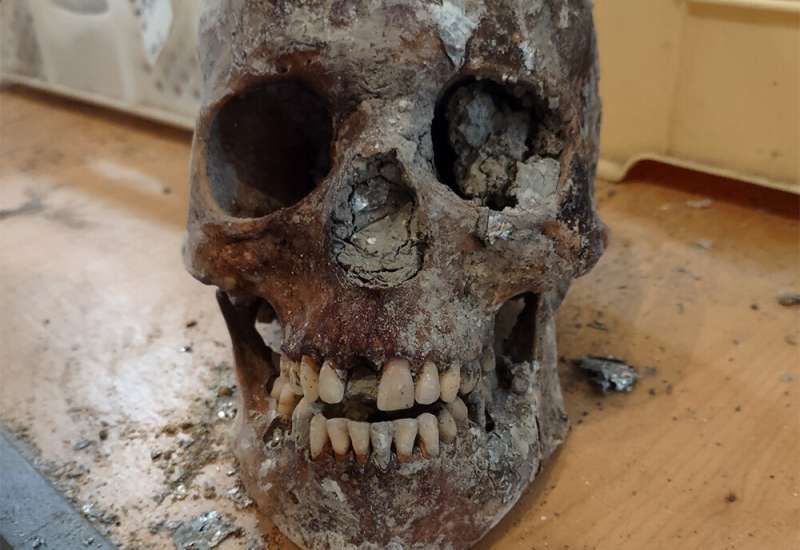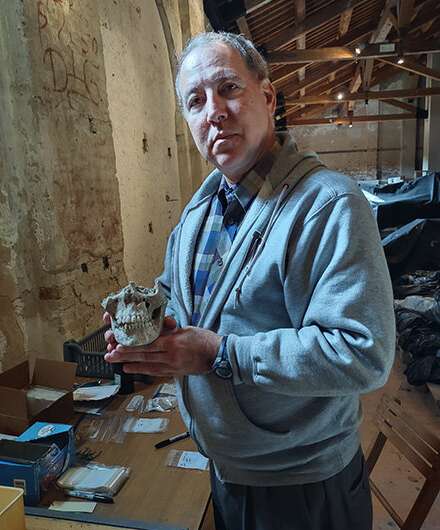This article has been reviewed according to Science X's editorial process and policies. Editors have highlighted the following attributes while ensuring the content's credibility:
fact-checked
trusted source
proofread
Centuries-old teeth could indicate the effectiveness of pandemic quarantines

Italian officials have provided an interdisciplinary group of researchers from the University of South Florida access to the remains of individuals who died from the Black Death, a plague that killed millions of people in the 14th century, to help determine the effectiveness of quarantines.
The team from the USF Institute for the Advanced Study of Culture and the Environment is extracting DNA from the teeth of 900 skeletons excavated from the Old Lazzaretto, an island off the coast of Italy where officials built the world's first isolation hospital in 1423.
"This is the first time that we could have a set of DNA sequences of pathogens present at a single location, and in parallel, DNA changes in the local populations," said Robert Tykot, professor of anthropology. "Thus, we can study for the first time, the co-evolution of pathogens and humans, unhindered by the fast mutations of modern viruses or the presence of vaccinated people."
USF visiting research fellow and Venice native Andrea Vianello is coordinating the project with preservation groups to develop the site's first genetic database, allowing them to trace the evolution of pathogens and humans over the span of 300 years to determine if the introduction of containment measures, such as masks and isolation, impacted genetics.
"The Venetians invented lockdowns and masks to address pandemics and they seemed to work," Vianello said. "Our project will test scientifically their effectiveness, before vaccines and medicines existed. We will see if any epidemics were stopped by the quarantine island."
The team launched the historical plagues research effort earlier this year when they began tracking Justinianic, the world's first plague to strike during the previous millennium, at a mass burial site in Jerash, Jordan. Tykot and Vianello organized an international conference at the Scuola Grande di San Marco in June to present their findings from Jordan and explain the importance of understanding past pandemics to address and manage current and future outbreaks.
Lead geneticist Rays Jiang, associate professor in the College of Public Health, helped identify bacterium of the plague in Jordan and is excited to expand their research, describing the Old Lazzaretto, a World Heritage Site, as a time capsule and treasure trove for the field of genetics.
"This unique quarantine island can contain devastating plague pathogens, newly introduced syphilis pathogen and anthrax pathogen that jumped from animals," Jiang said. "For the first time, it captures multiple pathogens coexisting in human populations over three centuries."
The team is applying for funding to further analyze the remains and conduct proteomics, an analysis that can reveal how genetics are expressed and can facilitate drug development by providing a comprehensive map of protein interactions associated with disease.

"Studying ancient pandemics is useful for preventing future ones as it allows us to identify epidemic patterns, track pathogen evolution, understand cultural and social contexts, learn from mistakes, anticipate challenges and inform public health policies," Jiang said.
The findings from this project will be displayed in a permanent exhibit at the new National Archaeological Museum of the Venetian Lagoon in Italy, expected to open in about five years.
Provided by University of South Florida


















